"Vanitas vanitatum"
Painted
by Brother Jens Rusch
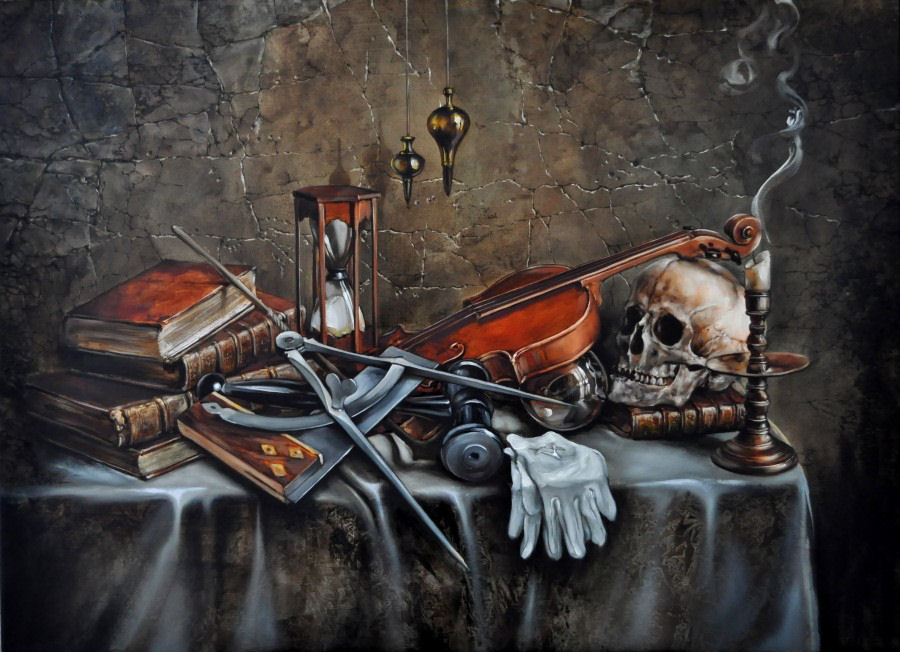
This
is the first image of my latest Oil-Painting named "Vanitas vanitatum". Original
Size ca 80 x 110 Oil on canvas.
Some words about the tradition of
Vanitas-Paintings or "Memento mori" :
Vanitas
themes were common in medieval funerary art, with most surviving examples in
sculpture. By the 15th century these could be extremely morbid and explicit,
reflecting an increased obsession with death and decay also seen in the
Ars
moriendi,
Danse Macabre, and the overlapping
motif of the Memento mori. From the
Renaissance such motifs gradually became more indirect, and as the still-life
genre became popular, found a home there. Paintings executed in the
vanitas style were meant to remind
viewers of the transience of life, the futility of pleasure, and the certainty
of death. They also provided a moral justification for many paintings of
attractive objects.
Common
vanitas symbols include skulls, which
are a reminder of the certainty of death; smoke, watches, and hourglasses, which
symbolize the brevity of life; and musical instruments, which symbolize brevity
and the ephemeral nature of life.Thereis
debate among art historians as to how much, and how seriously, the
vanitas theme is implied in still-life
paintings explicit masonical imagery
such as a skull, square and compass. As in much moralistic genre painting, the
enjoyment evoked by the sensuous depiction of the subject is in a certain
conflict with the moralistic message.
How the
Painting was Made
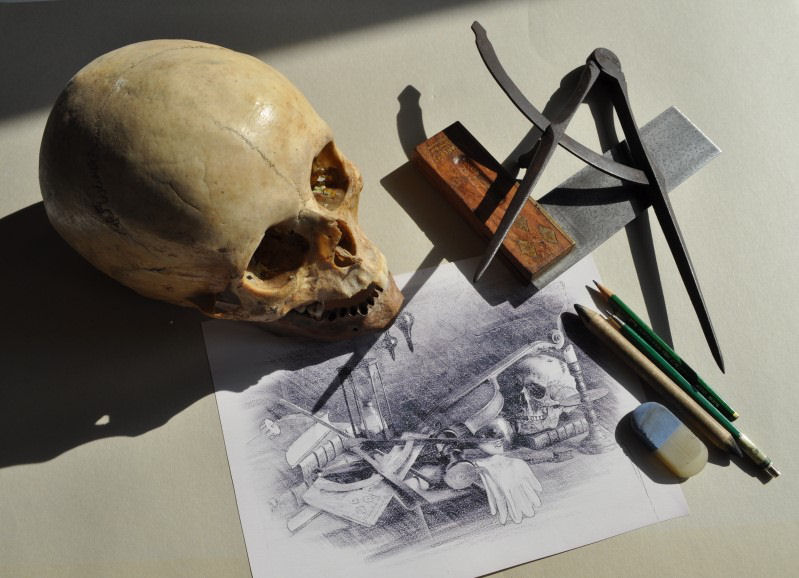
The first sketch was drawn.
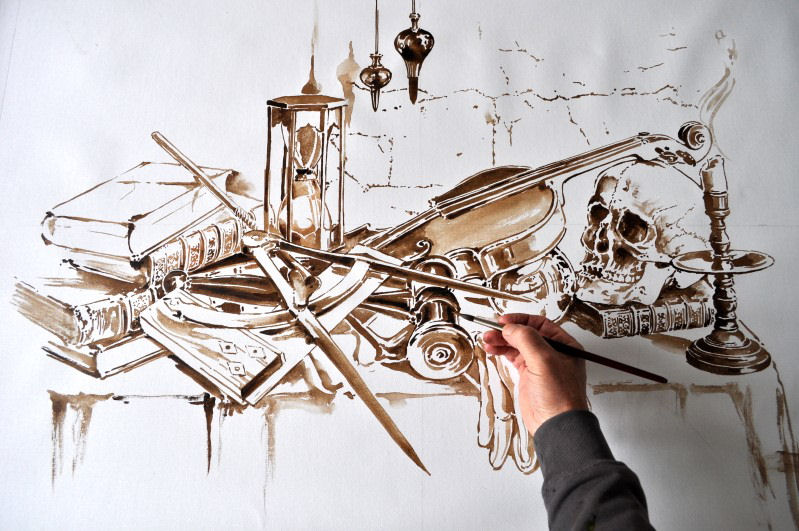
The painting was then sketched
on canvas.
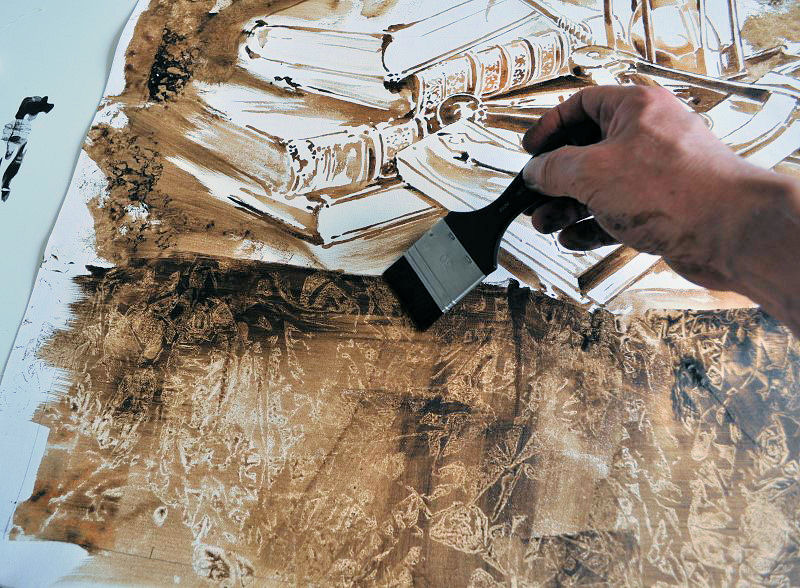
Then the background was added.
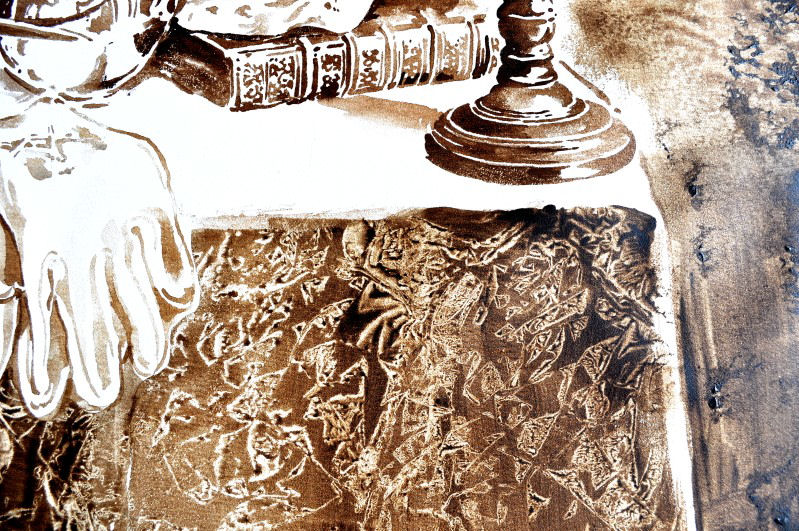
Then the structures were
added.
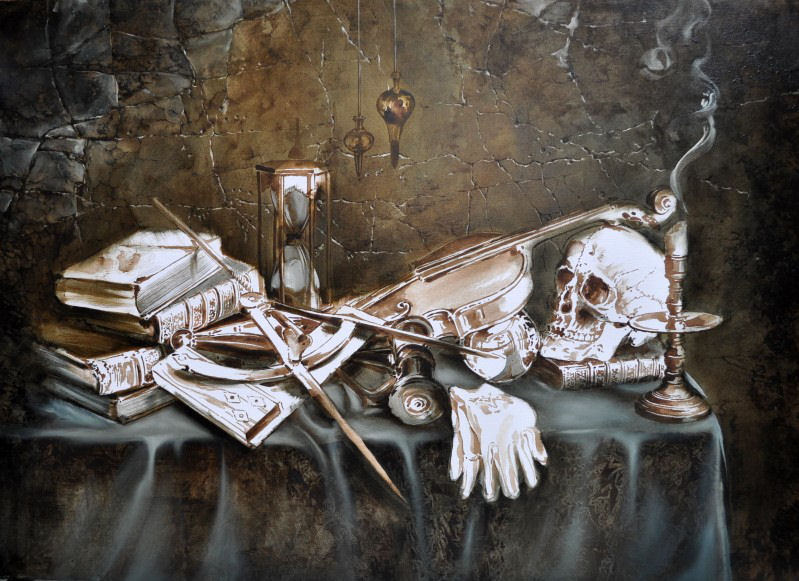
Then the background was
painted.
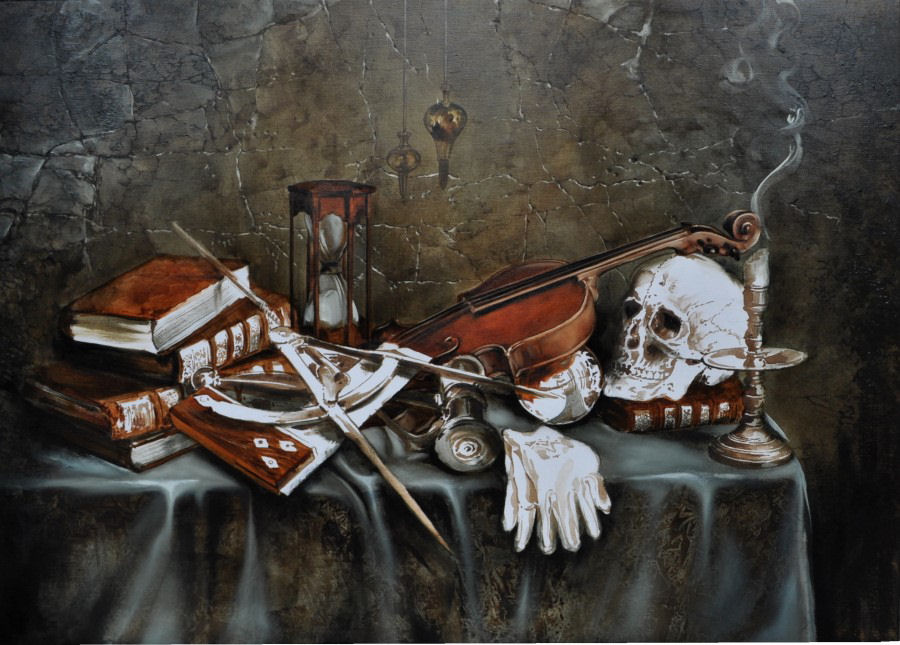
Then the middle tones were
painted.
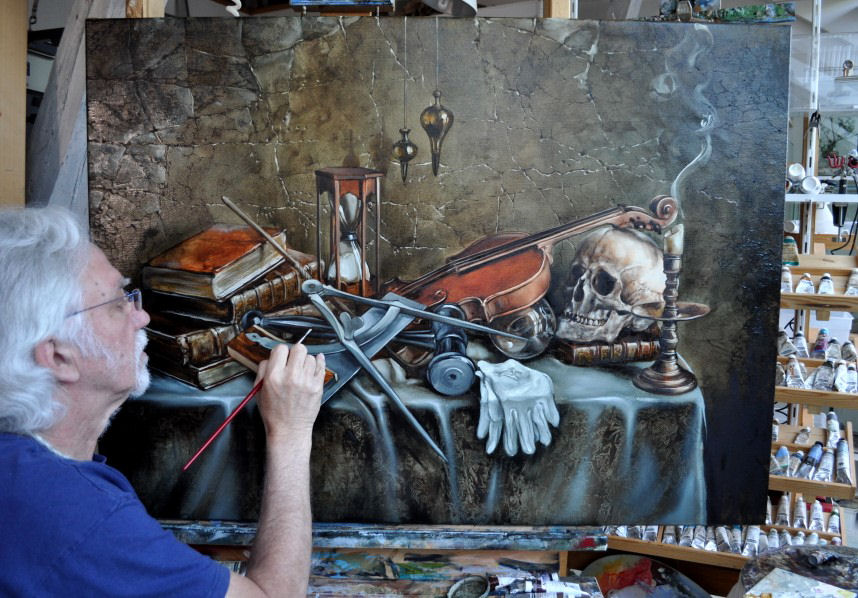
Brother Jens at work!
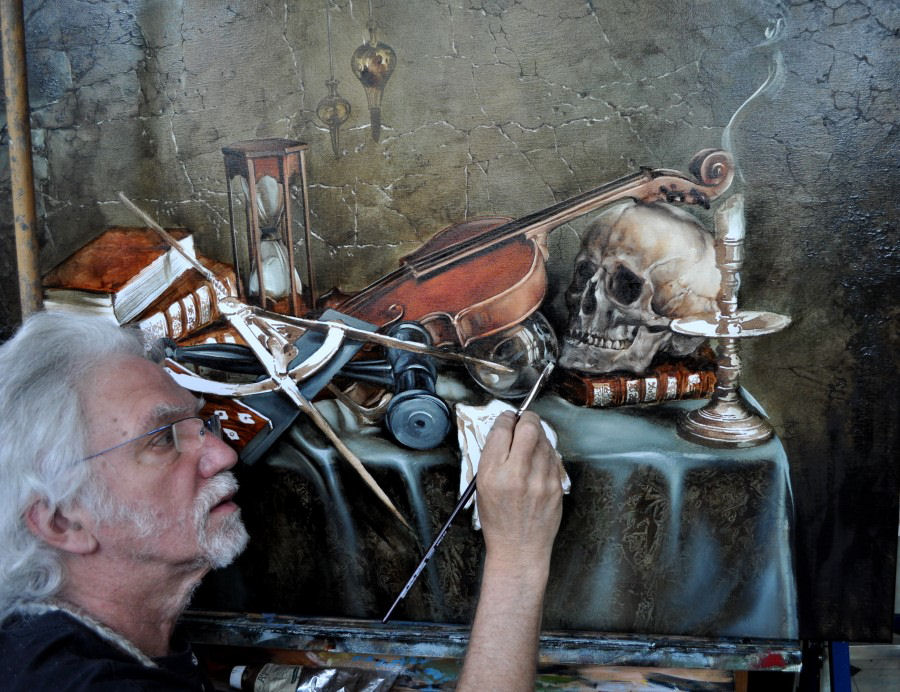
Brother Jens making it
perfect!
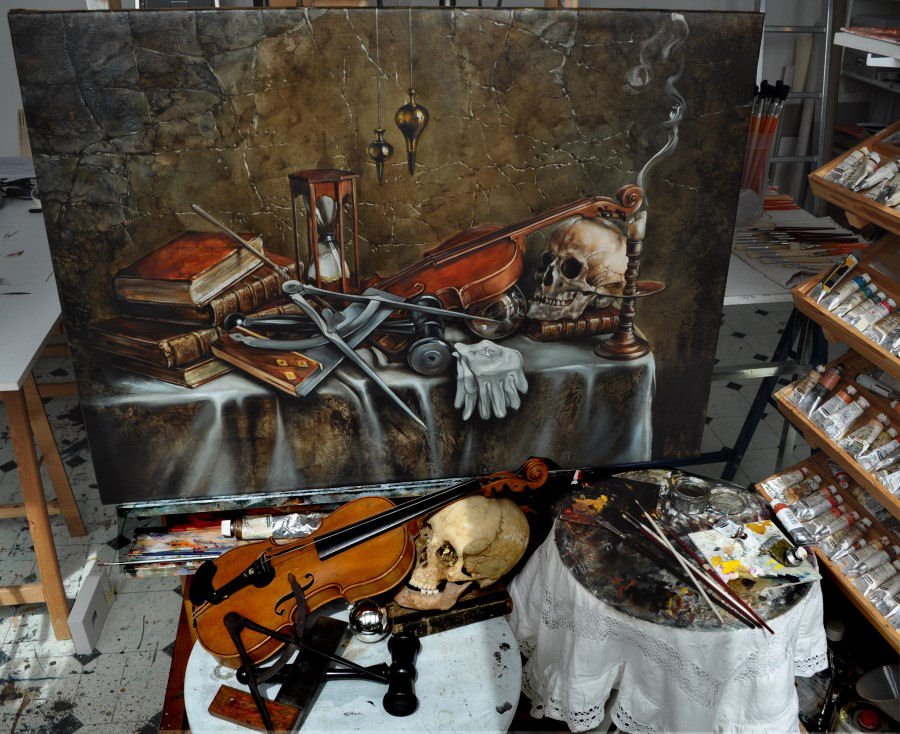
And the final studio scene!

